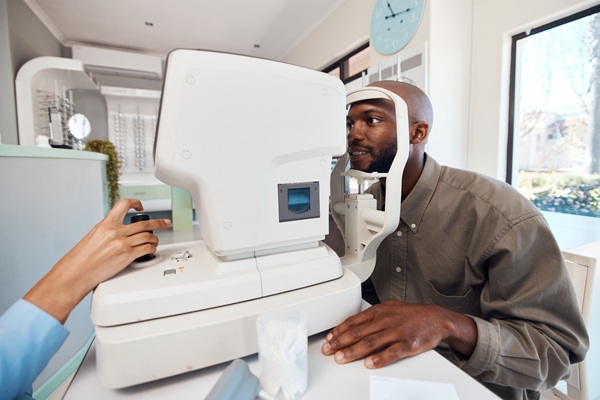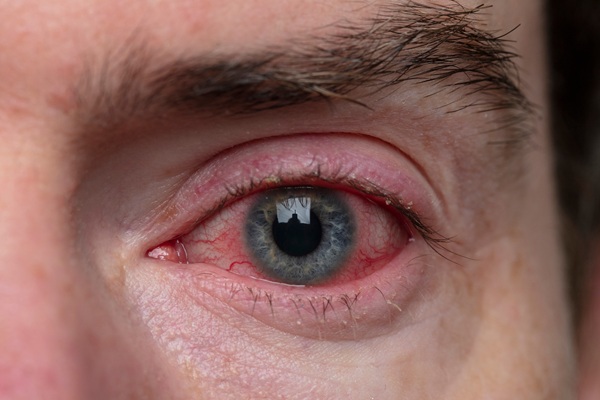When Are Progressive Lenses Recommended?

Most people need progressive lenses at some point because of presbyopia, which is the loss of near focusing. It is a normal part of the aging process that cannot be avoided. It causes trouble reading smaller print up close, even in those who are nearsighted. Progressive lenses are similar to bifocals but lack the distinct line on the lenses and provide much clearer vision than others.
What are progressive lenses?
Progressive lenses are a type of multifocal lens that look identical to the single vision type. These lenses have three prescriptions in one to cover all distance levels of vision. Progressive lenses are seamless; these do not have the typical lines that are visible in bifocals and trifocals but still enable a patient to see clearly at all three distance levels. Bifocals work by having a line that divides the lens into two parts, with the top refracting light to see things in the distance and the bottom refracting light to see up close. Trifocals are similar but correct near, mid-range and distance vision. Progressive lenses have smooth refraction changes that start from the top to bottom. These lenses are also more attractive and stylish.
Why are these lenses needed?
Presbyopia is a naturally occurring condition in which patients have trouble on focusing on objects that are nearby because of the natural lenses inside the eyes losing their flexibility. This is typical and is part of the aging process; it cannot be stopped. It usually begins around the early 40s and worsens over time. Symptoms include headaches, blurry vision when reading at a normal distance and eye strain due to trouble focusing on close-up work.
Progressive lenses are usually recommended after age 40 to treat presbyopia. Bifocals are known to have a limited vision range for presbyopia patients, while progressive lenses restore vision at all distances, making them the better option. Patients who have reading glasses no longer need to switch between multiple pairs; the progressive lenses are all that is needed for everyday tasks such as reading, driving and working on a computer.
Are there other treatment options?
Multifocal and monovision contact lenses can be used in patients with presbyopia; however, some patients have issues with depth perception and visual acuity. There are surgical options to treat presbyopia. The most common surgical option is corneal inlay, which is a type of corneal implant that can improve reading vision. Another option is refractive lens exchange, which is when the eye’s lens is removed and replaced with an artificial lens to enhance vision. This procedure can help lessen the need for reading glasses.
Conclusion
Presbyopia, which is the slow loss of the ability to focus on objects that are nearby, happens with age. Patients usually need treatment after the age of 40. Progressive lenses are a great option that are almost identical to bifocals and trifocals and allow the patient to see clearly from all distances without lines on the lenses.
Request an appointment here: https://www.texasoptical.net or call Texas Optical at (214) 771-7333 for an appointment in our Dallas office.
Check out what others are saying about our services on Yelp: Read our Yelp reviews.
Recent Posts
Contact lens exams are fundamental to maintaining clear vision and promoting overall eye health. Many individuals rely on contact lenses for daily activities, sports, and social events, yet consistent monitoring of lens fit and eye condition often receives less attention than it deserves. An optometrist specializing in evaluating the cornea, tear film, and general ocular…
Red, irritated eyes can result from something as simple as fatigue or dryness. However, persistent or severe symptoms may indicate a more serious condition requiring red eye treatment from an optometrist. Understanding when those everyday symptoms become something more serious is key to protecting long-term vision and avoiding complications. Catching the signs early on and…
Vision health is an important part of your everyday life. When urgent and unexpected issues arise, you must seek emergency eye care from an optometrist. Whether the issue results from trauma, infection, or sudden changes, immediate attention from an optometrist can prevent complications and preserve your long-term ocular health.Individuals may need emergency eye care for…
A myopia optometrist can help manage and slow the progression of nearsightedness, especially in children and young adults. Nearsightedness, or myopia, causes distant objects to appear blurry while close-up vision remains clear. Without proper care, myopia can worsen over time, leading to higher prescriptions and an increased risk of eye health problems.Myopia occurs when the…


